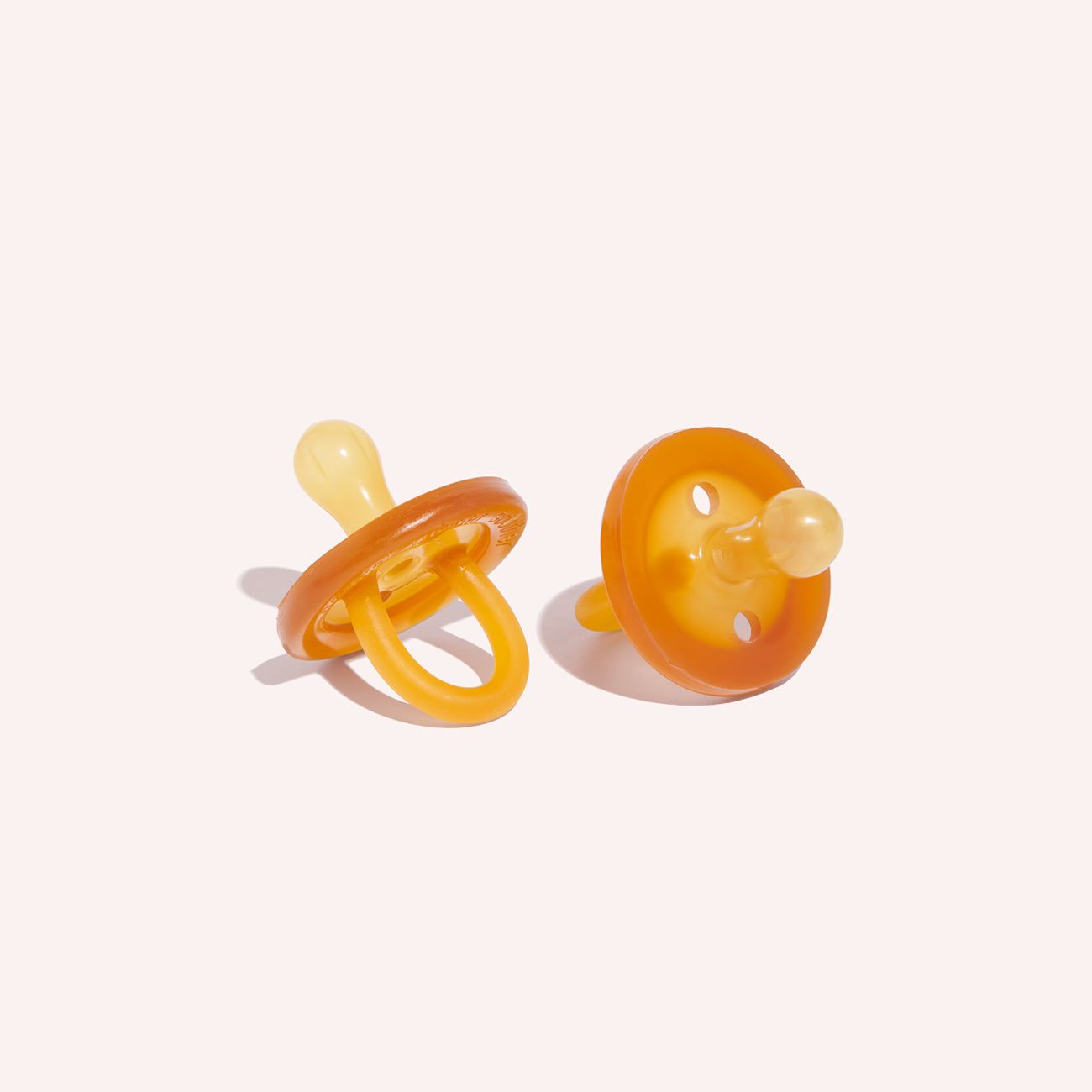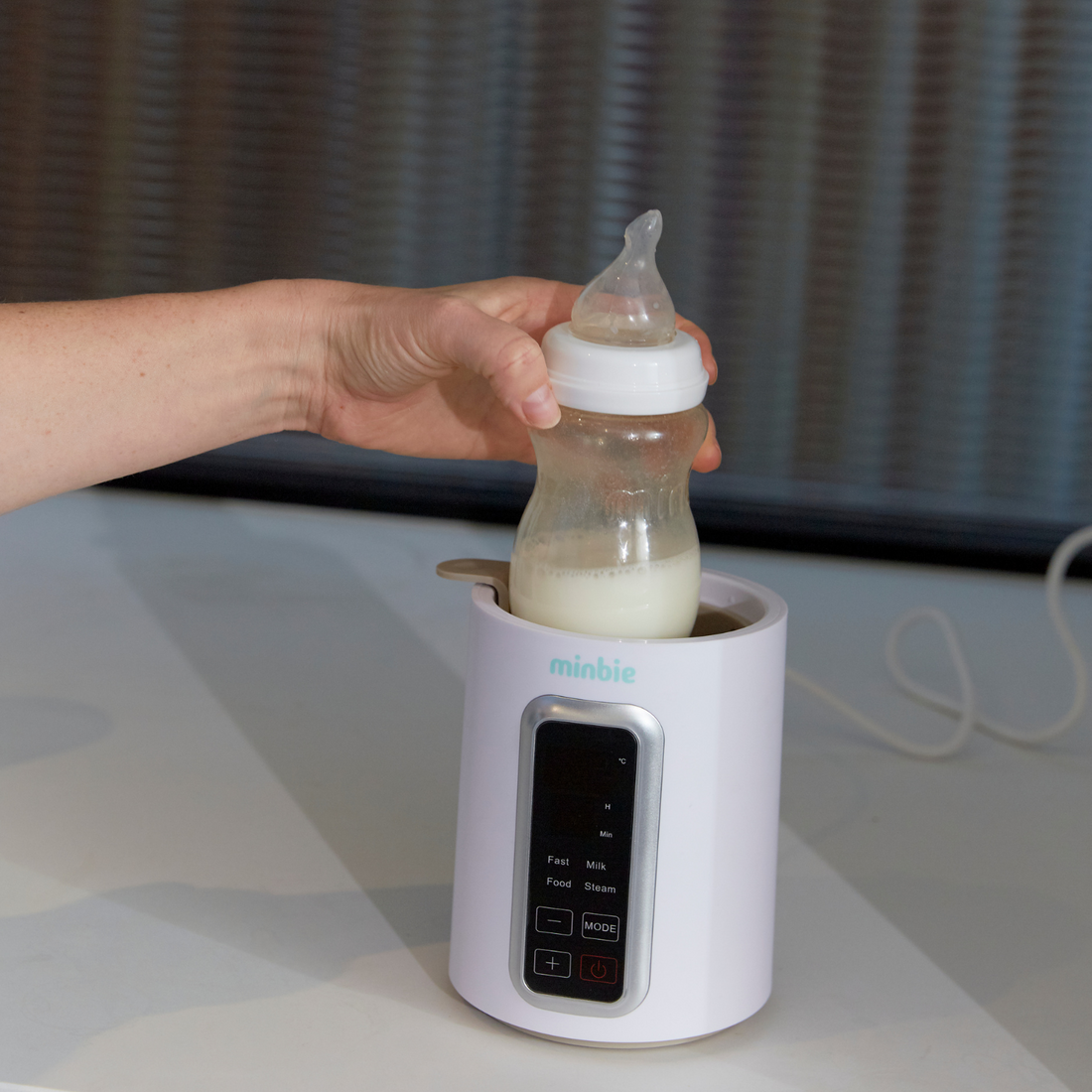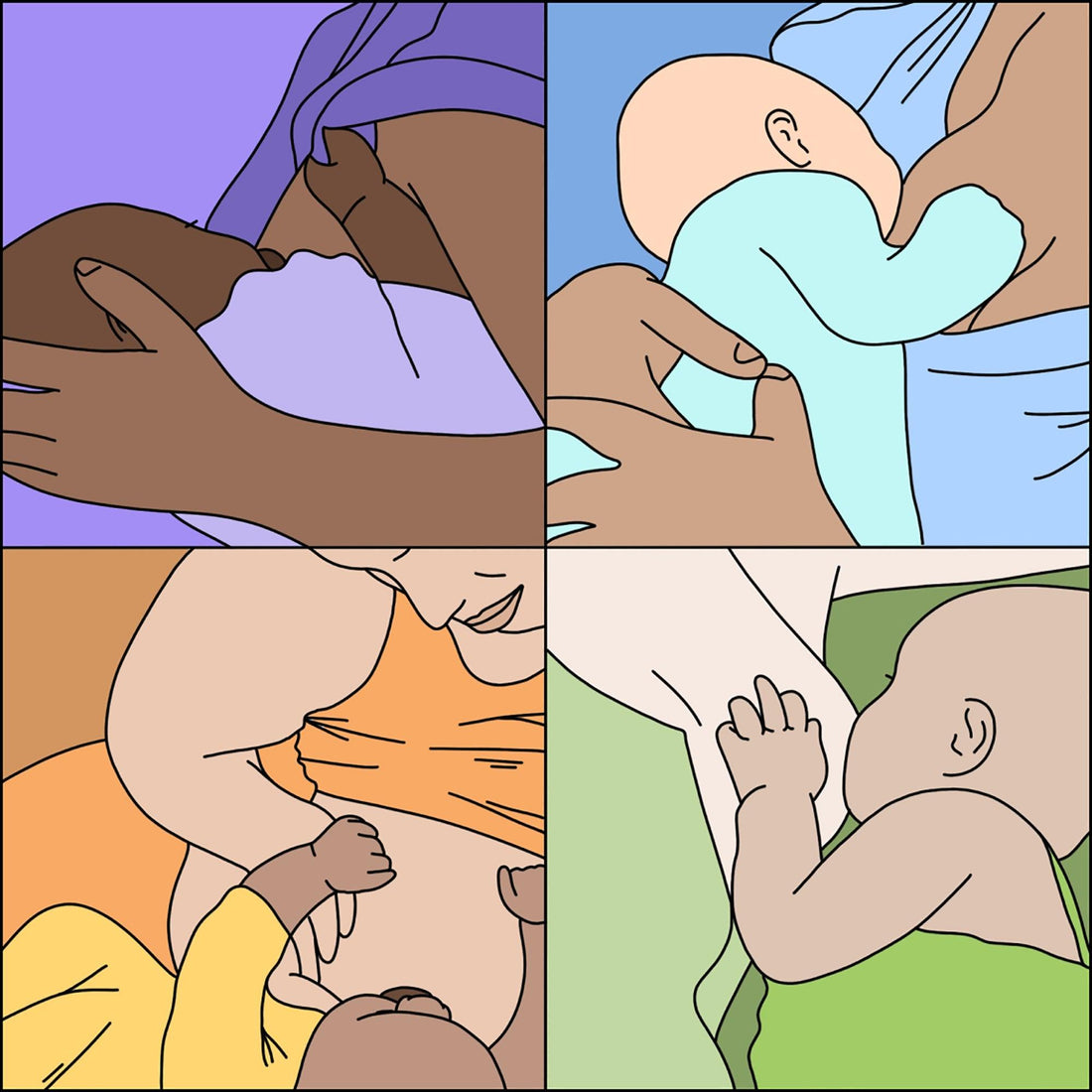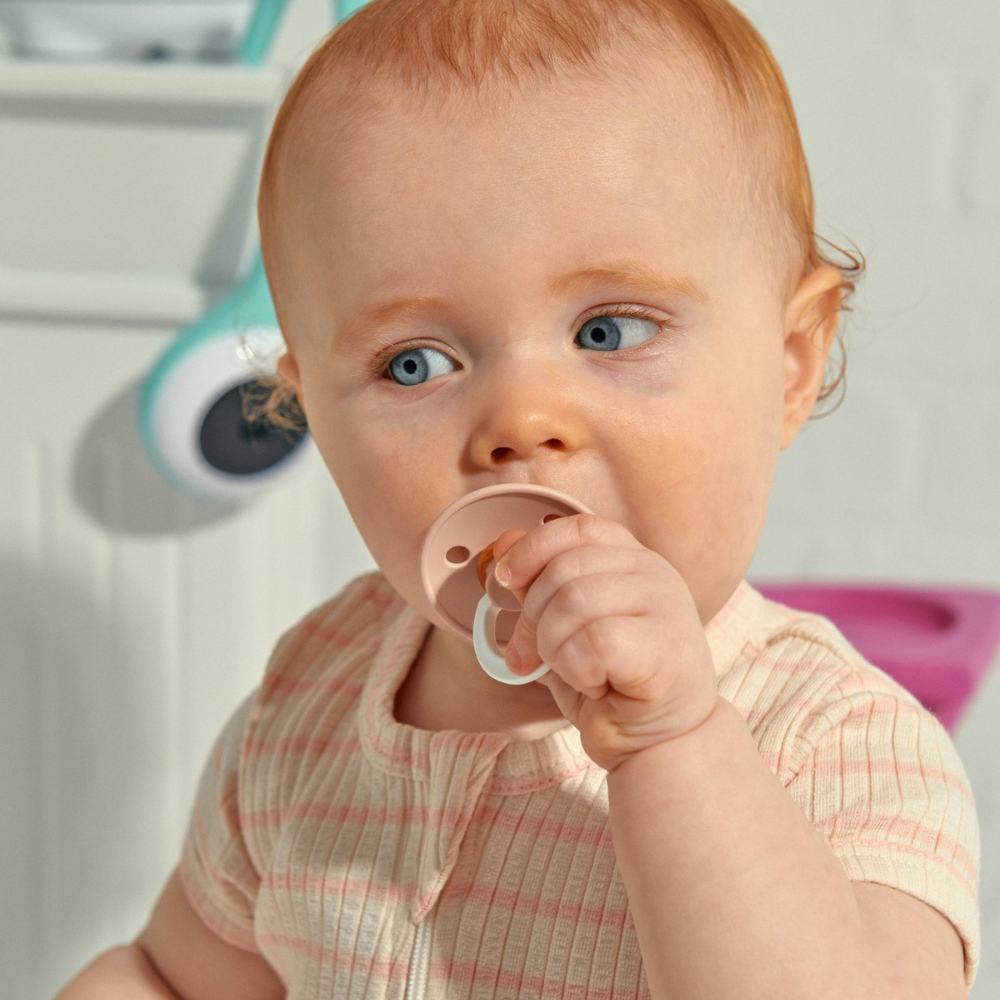A baby dummy is proven to soothe babies, but, because all babies are different, some love them, some don't. Like with bottles, your baby may have a preference, and it can take some trial and error to find the one they gel with. There are a huge amount of options out there, and it can get overwhelming. Who know choosing a $20 piece of plastic could be such a huge decision? Luckily, we've done the research for you, and curated a small collection that covers every need or particularity your baby may have. Ahead, our 101 guide to help you discover the best dummies for you in 2024.
First, all your dummy qs, answered
What does a dummy do for a baby?
Let’s start with the basics of what a dummy actually does and why you might want to invest in one from the get-go. A dummy is sucked on by babies and helps them to self-soothe as it mimics the natural action of breastfeeding. It is also thought that using dummies when putting babies to sleep may also reduce the risk of SIDS. Whilst dummies can be extremely useful for newborns, you may want to start weaning your child off one from 8 months old to ensure they don’t become too dependent on them.
What are the types of dummies?
You might have heard the age old adage, there’s a shoe for every foot, and when it comes to dummies there is one for every baby! Let us help break down the different types of dummies in Australia.
Silicone Dummy
Silicone dummies are probably the most popular ones on the market. Be sure to only buy 100% food safe silicone. They’re a great option thanks to their durable nature and are dishwasher safe.
Latex Dummy
Latex dummies are often a little softer and more flexible than silicone dummies. However, they can be less durable.
Natural Rubber Dummy
Natural rubber dummies are the perfect choice for parents looking for more natural options and to help reduce your environmental footprint.
Cherry Shaped Dummy
Cherry shaped teats are round and most similar to a mother’s breast. They are recommended as the best dummies for newborns by lactation consultants to avoid nipple confusion.
Orthodontic Teat Dummy
Orthodontic teats instead have a round top and a flat bottom so your baby’s tongue rests flat against the bottom of the teat. They’re the preferred option by orthodontists, whilst lactation consultants suggest introducing it when babies are a little older around 6 months.
When to introduce a dummy pacifier?
The average age a baby starts using a pacifier is 4 months old. However, many parents introduce a dummy to newborns too. Conversely, the average age a baby weans off a pacifier is 36 months old.
How do you choose a dummy?
The best pacifier is the one that your baby takes to and is comfortable with. When it comes to choosing the best dummy for a newborn, there are a few things to consider. Have a think about:
- Feeding style: If you are breastfeeding or bottlefeeding or both, you may want a dummy that supports that.
- Material: Choose between silicone, latex and natural rubber.
- Size: Some dummies come in different sizes. The smaller ones are best for newborns and tend to be a little softer too.
- Teat: Choose between a cherry teat and an orthodontic teat. Cherry is a good option for newborns. The nipple should be made of soft, pliable material and should have a smooth surface. You may also wish to match the teat that of their bottle.
- Safety: The base of the pacifier should be wide enough so that it won't fit all the way into your baby's mouth.
- Single piece dummies: Are a good option to consider as they tend to be safer to use as they don’t come apart easily.
Best dummy for breastfed baby
When it comes to introducing dummies to a breastfed baby, it’s generally advised to wait until your child is around a month old. This is to give your baby time to get used to breastfeeding and avoid nipple confusion. Choose a dummy that best resembles the shape of the mother’s breast - any of the below four options are ideal for breastfed babies.
How to clean a baby dummy?
Dummies can be hot spots for bacteria and germs to develop, so it’s really important to keep close attention on sterilising and cleaning your dummies. We like the Philips Avent Microwave Steriliser as it’s quick and easy (and also sterilises bottles at the same time). Just pop your dummy inside the steriliser and then into the microwave to kill 99.9% of germs and bacteria. Alternatively, you can use boiling hot water and soap to clean your child’s dummies.
How often do you replace a newborn dummy?
Make sure to regularly inspect your newborn dummy for any wear and tear which can become a safety issue. Generally, the rule is to replace a dummy every 4-6 weeks.
How to sterilise baby pacifiers?
We advise you to sterilise dummies after every use. Sterilising dummies will remove any bacteria and prevent your baby from developing an infection. It’s quick and easy to sterilise dummies with a steriliser. If you don't have one, follow these steps:
- Pour boiling water over the dummy in a bowl and let it soak for 5 minutes.
- Let the dummy dry and cool off on a clean towel.
- Use the towel to press out any excess water inside the nipple.
We don’t recommend you put your pacifier or baby soother in the dishwasher as they often don’t reach a high enough temperature to properly sterilise the dummy. You can keep your dummy clean between sterilising it with warm soapy water.
THE BEST DUMMIES IN 2024







































































































